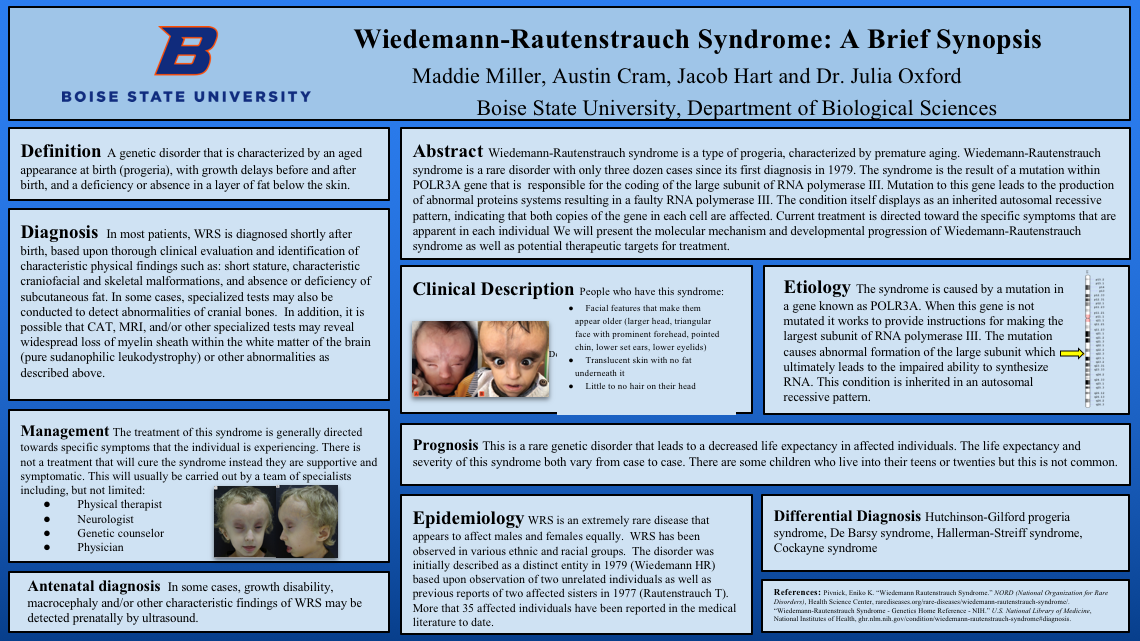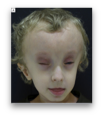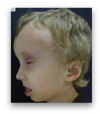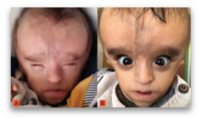Maddie Miller, Austin Cram, Jacob Hart, Dr. Julia Oxford

Definition
A genetic disorder that is characterized by an aged appearance at birth (progeria), with growth delays before and after birth, and a deficiency or absence in a layer of fat below the skin.
Diagnosis
In most patients, WRS is diagnosed shortly after birth, based upon thorough clinical evaluation and identification of characteristic physical findings such as: short stature, characteristic craniofacial and skeletal malformations, and absence or deficiency of subcutaneous fat. In some cases, specialized tests may also be conducted to detect abnormalities of cranial bones. In addition, it is possible that CAT, MRI, and/or other specialized tests may reveal widespread loss of myelin sheath within the white matter of the brain (pure sudanophilic leukodystrophy) or other abnormalities as described above.
Management


The treatment of this syndrome is generally directed towards specific symptoms that the individual is experiencing. There is not a treatment that will cure the syndrome instead they are supportive and symptomatic. This will usually be carried out by a team of specialists including, but not limited:
- Physical therapist
- Neurologist
- Genetic counselor
- Physician
Antenatal Diagnosis
In some cases, growth disability, macrocephaly and/or other characteristic findings of WRS may be detected prenatally by ultrasound.
Abstract
Wiedemann-Rautenstrauchsyndrome is a type of progeria, characterized by premature aging. Wiedemann-Rautenstrauchsyndrome is a rare disorder with only three dozen cases since its first diagnosis in 1979. The syndrome is the result of a mutation within POLR3A gene that is responsible for the coding of the large subunit of RNA polymerase III. Mutation to this gene leads to the production of abnormal proteins systems resulting in a faulty RNA polymerase III. The condition itself displays as an inherited autosomal recessive pattern, indicating that both copies of the gene in each cell are affected. Current treatment is directed toward the specific symptoms that are apparent in each individual We will present the molecular mechanism and developmental progression of Wiedemann-Rautenstrauchsyndrome as well as potential therapeutic targets for treatment.
Clinical Description

People who have this syndrome:
- Facial features that make them appear older (larger head, triangular face with prominent forehead, pointed chin, lower set ears, lower eyelids)
- Translucent skin with no fat underneath it
- Little to no hair on their head
Etiology

The syndrome is caused by a mutation in a gene known as POLR3A. When this gene is not mutated it works to provide instructions for making the largest subunit of RNA polymerase III. The mutation causes abnormal formation of the large subunit which ultimately leads to the impaired ability to synthesize RNA. This condition is inherited in an autosomal recessive pattern.
Prognosis
This is a rare genetic disorder that leads to a decreased life expectancy in affected individuals. The life expectancy and severity of this syndrome both vary from case to case. There are some children who live into their teens or twenties but this is not common
Epidemiology
WRS is an extremely rare disease that appears to affect males and females equally. WRS has been observed in various ethnic and racial groups. The disorder was initially described as a distinct entity in 1979 (Wiedemann HR) based upon observation of two unrelated individuals as well as previous reports of two affected sisters in 1977 (RautenstrauchT). More that 35 affected individuals have been reported in the medical literature to date.
Differential Diagnosis
Hutchinson-Gilford progeria syndrome, De Barsysyndrome, Hallerman-Streiffsyndrome, Cockayne syndrome
References
Pivnick, EnikoK. “Wiedemann RautenstrauchSyndrome.” NORD (National Organization for Rare Disorders), Health Science Center, rarediseases.org/rare-diseases/wiedemann-rautenstrauch-syndrome/.
“Wiedemann-RautenstrauchSyndrome – Genetics Home Reference – NIH.” U.S. National Library of Medicine, National Institutes of Health, ghr.nlm.nih.gov/condition/wiedemann-rautenstrauch-syndrome#diagnosis.
Additional Information
For questions or comments about this research, contact Austin Cram at AustinCram@u.boisestate.edu.